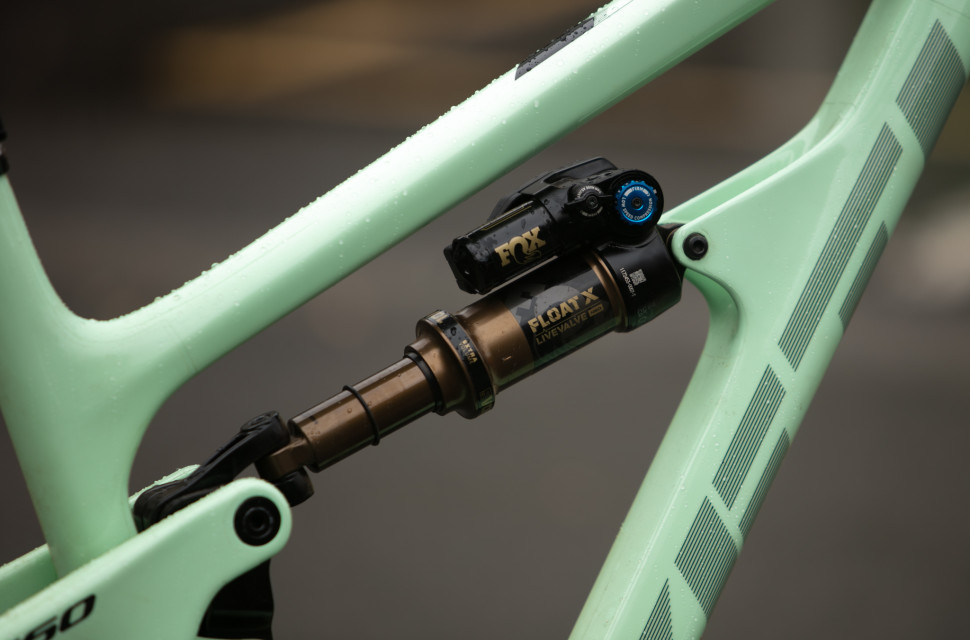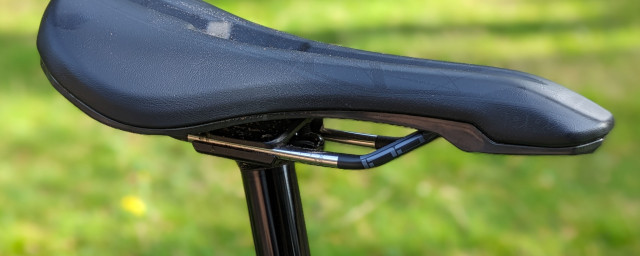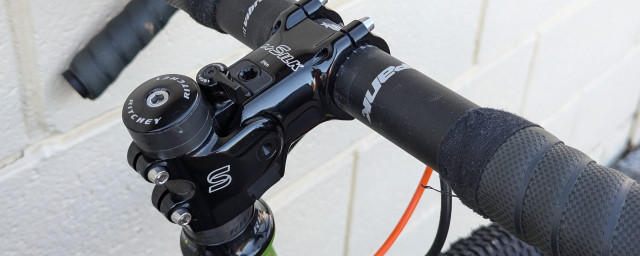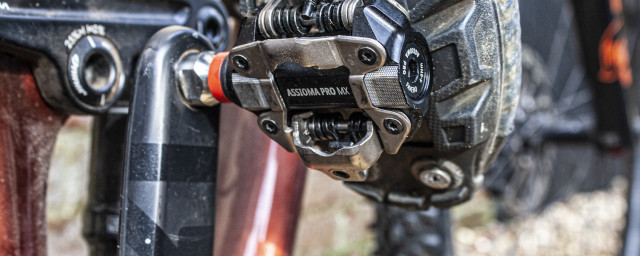Fox Live Valve Neo first ride review

Fox Live Valve was the first product to bring automatic, on-the-fly suspension adjustment to mountain bikes. In 2018, when it launched, it was a wired system that relied on brands to produce bikes that could accommodate it. But now, the suspension giant has finally gone wireless with Fox Live Valve Neo. We headed out to Silverfish's Fox Service Centre in Risca to put it to the test.
- How to set up your mountain bike suspension - suspension set-up explained
- 9 tips to keep your suspension running sweeter for longer
- Air vs coil suspension - which is best for mountain biking?
As you might expect, an awful lot is going on under the hood with Fox’s latest Live Valve Neo so we’ll hand over to the news story for a deeper dive into the technology, but here’s a quick(ish) glance over what it’s all about. Although an incredibly complex bit of kit, it’s rather straightforward.
To get the biggest caveat out of the way, Live Valve Neo only adjusts the shock. Fox has chosen this route as the brand believes there’s not much efficiency to be gained to justify the extra complexity of hooking up both ends. However, there’s an awful lot of adjustment available to the user here, both through external dials on the shock itself and in Fox’s app. The latter allows for in-depth adjustment of the g-force transmitted to the wheels that's needed to actuate the shock (so its sensitivity, in essence) and there are a bunch of presets that can be tweaked. But having had a quick play with it, it’s a rabbit hole that’s only as deep as you make it.
On the shock, there’s a Firm mode adjustment dial that provides several clicks to play with that tweaks the firmness of the shock when it's in the Firm mode. When the system is turned on, the shock defaults to Firm mode, only opening to absorb bumps and trail imperfections are picked up by Live Valve Neo’s sensors – of which, there are two. One mounted at the front brake caliper and another at the rear.
Both of these pretty much do the same thing – sense wheel impacts at both ends of the bike but the front sensor also detects the angle of the bike and if it's descending or ascending.
Once an impact is detected, Fox says it takes as little as 1/70th of a second for the Neo protocol to talk to the shock and tweak the magnetic servo. The servo opens the compression circuit for bump absorption and traction when needed. As previously mentioned, the shock remains in Firm mode by default, meaning there’s a solid pedalling platform. If the system were to run out of power, it would then default to open, where it’ll act like a bog standard shock.
Unlike competitor products, there are just two settings for Live Valve Neo to flick through. However, as it actuates so quickly, we’re told that it can make loads of adjustments throughout the stages of a corner, for example, balancing traction with a stable platform through which to pump.
If Fox’s new wireless suspension activation sounds like your cup of tea, it’s available on the Fox Float X, as tested and the DHX, the coil variant. Of course, both are powered by a single battery. It’s not cheap, it must be said, with the sensors costing £450 and the Float X air-shock being an additional £1,119. As for the weight, we’re told that the Float X Live Valve Neo is 115g weightier than the regular Factory-level shock.
Fox Live Valve Neo - Performance
For my brief ride with the new Live Valve Neo, I headed to an incredibly wet Risca where I sampled the tech over a few trails local to Fox’s Service Centre. I was treated rather well, too, as the guys at Silverfish (Fox’s UK distributor) kindly built up a Yeti SB160 with the system.
And first impressions were rather good. The ride started with a couple of minutes of Tarmac pedalling where Live Valve Neo had defaulted to Firm. I’d admit, Yeti bikes generally pedal very well thanks to the neat Switch Infinity link but Live Valve Neo certainly held the shock firm, refusing to allow any pedalling energy to move through the shock.
I spent a little bit of time climbing on a paved incline with shallow steps. When hitting them, the fork dipped in its travel, the impact was picked up by the front sensor and allowed the shock to absorb the incoming step. Usually with such a firm compression setting, a lot of the impact would travel straight up the saddle but it was clear the system was opening and closing in the split second of respite between the stairs.
But that’s enough about the Tarmac talk. Off-road, on a mildly technical climb, is where the system really came to life. As it constantly flicked between the settings and, silently might I add, it carefully balanced traction and comfort with a solid pedalling platform. Grip over the wet rocks was abundant but there was never even a hint of lethargy in the bike.
However, this is where I found that Live Valve Neo began to trip over itself. In sections of impacts that arrived a bit quicker than others, it felt as if it wasn’t fully ready to anticipate an impact at the rear wheel. Because of that, the shock didn’t open as the impact happened. In such sections, the system didn’t quite show the refinement it proudly flaunts elsewhere but I would put this down to how I set the Firm mode – as firm as it gets. Opening it up a click or two would likely better prepare the system for such instances. Of course, there’s the app, too.
On the descents, Live Valve Neo continued to impress. It’s remarkably natural and in no way does it detract from the ride, or make itself known unless in a scenario where you would want it to work. And that came as a real surprise given that it defaults to firm.
Through chattery sections, the system clearly opened up, allowing the SB160 full access to its 160mm of rear-wheel travel. The rear wheel capably tracked the ground as any other bike would. It’s when pedalling comes into play that the bike has a new sense of efficiency, making full use of each pedal stroke but again, without making itself known.
There were clear benefits under heavier compressions too, where the shock would firm up and use the compression, rather than absorb it. As such, as much energy as possible is transferred through the bike, instead of being sucked by the shock which resulted in a heft of free momentum. It’s the exact same under cornering too, where there’s a clear boost in support but without sacrificing traction.
Fox Live Valve Neo - Early verdict
Wireless suspension adjustment options such as Live Valve Neo and Flight Attendant represent the absolute pinnacle of the sport – and they’re priced to match.
What Live Valve Neo does is open up options. If you’ve got a bike that doesn’t quite perform on the pedals but rips downhill, it’ll amend that. Then, as it doesn’t rely on a whole ecosystem of suspension components, it can be run with whatever fork you choose. Additionally, no longer does it require specific frame features for it to integrate with any bike which may reduce the prices of Live Valve-equipped frames.
Fox Live Valve Neo is a product that flies under the radar in all respects. It doesn’t look too dissimilar from regular components but, most importantly, it’s incredibly natural in its operation. It’s silent, superfast and rarely a hindrance as it confidently balances traction with efficiency. Admittedly, it got a little iffy during a mildly technical climb but more time with the system should iron these out. Hopefully, we’ll be bringing you a full review.















